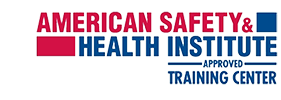
While many new parents take CPR classes before or when their new babies are born, as their children move from the infant stage, they don’t maintain their skills. While toddlers and older children aren’t at risk for issues like SIDS or are at a lower risk for suffocation, it’s still necessary for parents to have first aid and CPR training for children. To help you be better prepared to respond to emergencies in toddlers and older children, our CPR training center in Raleigh is sharing important first aid tips to care for children.
Common Medical Emergencies in Children Requiring CPR
It’s a scary thought that over 12,000 children under the age of 19 die each year from accidental injuries, and while rare, sudden cardiac arrest does occur in children. Knowing how to properly respond to medical emergencies in children can ensure that you can provide lifesaving care that can be the difference between a positive outcome and a tragedy in the even of an emergency.
In children, cardiac arrest is most likely to come from:
- Choking
- Electrocution
- Suffocation
- Drowning
- Congenital heart defect
- Injury, such as a car accident
- Poisoning
For children between one and four years of age, drowning is the leading cause of death, and for children five to 18, car accidents are the leading cause.
Preventing Medical Emergencies in Children and Toddlers
For young children, the risk of injury and death can be decreased when parents and caregivers take precautions.
For toddlers this includes:
- Prevent drowning inside the home by never leaving a toddler alone in a bathtub, keeping the toilet lid secured, and emptying mop buckets and other sources of water immediately.
- Prevent outdoor drowning by having alarms on a door if there’s an outdoor pool and keeping a pool fence locked. For small splash pools, keep them covered or empty when not in use.
- Avoid giving toddlers hard candy, nuts, and cylindrical or round objects that are choking hazards, like hot dogs or grapes, unless sliced vertically.
- Use the proper car seat for your child, and taking care to rear face until your child is two.
- Covering electrical outlets.
- Throwing away plastic bags and other suffocation hazards.
- Keep medication and household chemicals in locked cabinets or out of reach of children.
- Hold hands when crossing the street or when walking through parking lots.
With older children, over the age of five, reduce the risk of accidents with the following steps:
- Make sure you continue to use the right size car seat or booster seat and your child knows to stay buckled and sit upright in the seat at all times.
- Don’t let children swim in a pool unattended and if they will be swimming, sign them up for swimming lessons.
- Discuss traffic and pedestrian safety, including looking both ways and using sidewalks and crosswalks.
- Be aware of other children when playing on playgrounds to avoid getting injured from a child swinging or sliding down a slide.
- Continue to keep medication and household items where children can’t get to them.
CPR Steps for Toddlers and Children
If there is a medical emergency and your child is unresponsive or is not breathing, it’s important to take immediate action to provide care.
If someone is with you, have them call 911 while you check for responsiveness by shaking their shoulder, calling out to them, or tapping their heel. If you are alone, give two minutes of CPR before calling 911, and follow these steps for a child between one and eight years old:
- Carefully place the child on their back.
- Perform chest compressions by placing the heel of your hand on the breastbone toward the center of the chest, making sure it’s not at the end of the breastbone.
- Keep your other hand on the child’s forehead to tilt the head back slightly and compress the chest about 1/3 to 1/2 the depth of the chest.
- Give 30 chest compressions firmly and quickly, to the beat of the song “Staying Alive.”
- Open the airway by gently lifting the chin and listening for breathing and watch for chest movements.
- If there’s no breathing, pinch the nostrils shut, cover the child’s mouth with yours and give two rescue breaths of about one second each.
- Continue the cycle of compressions and rescue breathing.
Treating Choking in Children
Choking is more common in toddlers and young children than older children, but it can happen to anyone. If the child can make sounds and produce a firm or loud cough, let them cough to clear the airway, but stay nearby. If your child can’t breathe, make a sound, or is holding their neck, perform abdominal thrusts, by taking these steps:
- Kneeling behind the child and at shoulder height, and placing a fist just above the belly button and below the sternum with your thumb next to their belly.
- Hold your fist with your other hand and give quick, upward thrusts into their belly.
- Continue until the object comes out and they can breathe or cough or they become unresponsive.
- If they become unresponsive, follow CPR protocol.
Schedule Your Child CPR Training in Raleigh
While knowing the steps of CPR and first aid for children are important, having hands-on training from a certified professional will ensure you are comfortable and confident to step in when there is an emergency. Our CPR training center is certified by the American Heart Association, and our classes are taught by experienced medical professionals and first responders.
Get the training you need to step in if there’s an emergency, and schedule your infant first aid class today. To learn more, call us at (919) 639-4848 or fill out the contact form below. You may also enjoy learning from our CPR & first aid tips for teens blog as well as our post on first aid training and CPR for infants.



